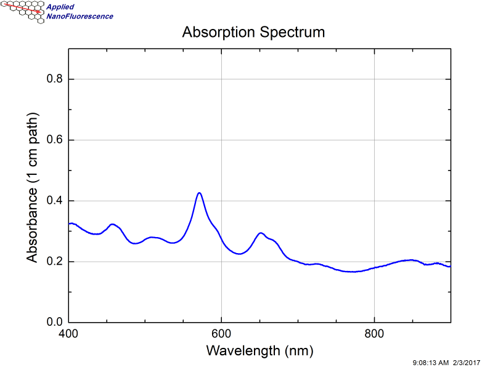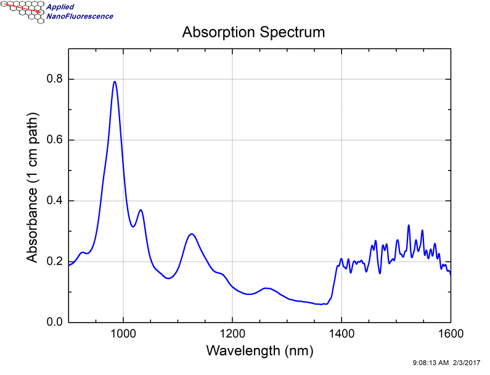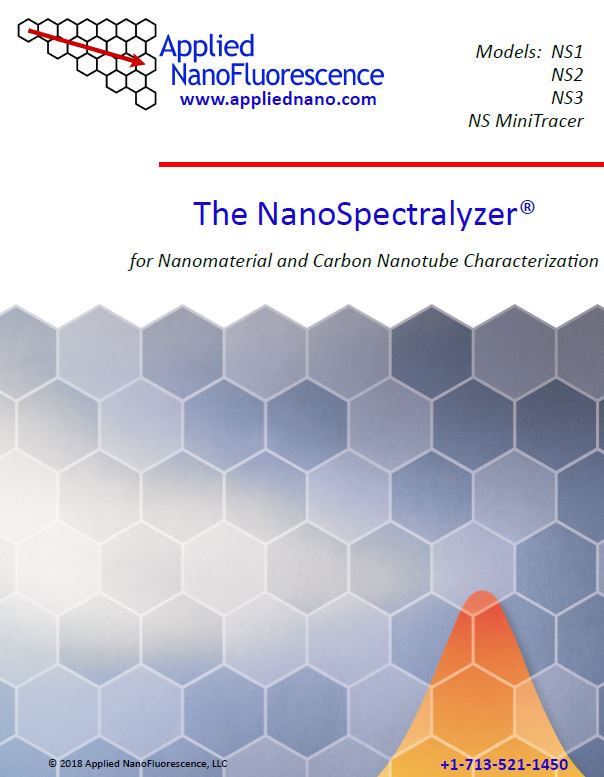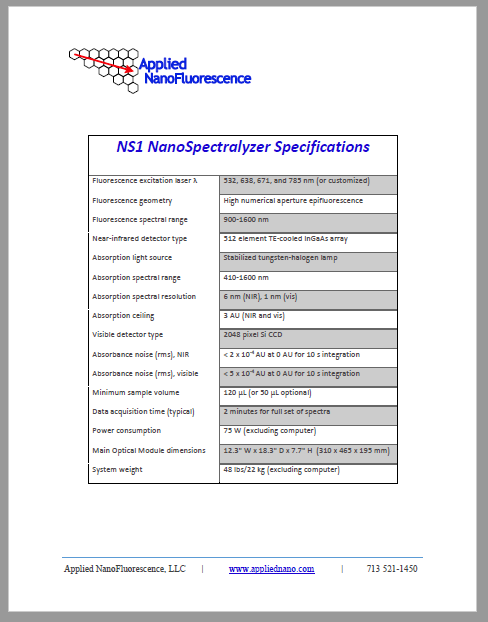The NS1 NanoSpectralyzer®
ANF offers the NS1 NanoSpectralyzer®, a unique automated fluorimetric analyzer based on the most advanced research in nanotube spectroscopy. This instrument combines a specialized optical system with custom software to enable efficient, turn-key analyses of bulk single-walled carbon nanotube (SWCNT) samples. The NS1 NanoSpectralyzer is valuable for tuning the process conditions in SWCNT growth reactors, for quality control, for guiding nanotube sorting and separation methods, and for a wide range of research applications that require detailed compositional data on a rapid time scale.
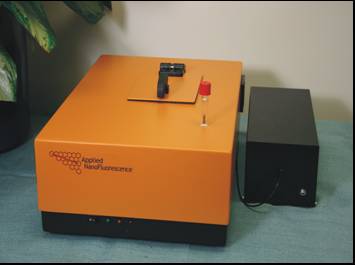 The user can prepare a sample in a few minutes by ultrasonically dispersing ca. 0.01 mg of a raw solid SWCNT specimen into a small volume of aqueous surfactant solution. A few drops of this suspended specimen are then placed into the NanoSpectralyzer's sample cell. After simple selection of experimental modes, a single mouse-click launches an automated sequence of data collection and interpretation that quickly provides the operator with a detailed compositional analysis. The sample is first irradiated with light from diode lasers of pre-selected wavelengths, and the resulting fluorescence emission is collected by specialized optics, dispersed in a spectrograph, detected by a multichannel near-IR sensor, and recorded by the instrument's computer. The resulting spectral data are automatically analyzed, using established findings in SWCNT optical spectroscopy, to provide a detailed description of the semiconducting SWCNT content of the sample. Specific (n,m) species are identified along with their apparent relative abundances. The findings are also displayed in the form of a diameter distribution.
The user can prepare a sample in a few minutes by ultrasonically dispersing ca. 0.01 mg of a raw solid SWCNT specimen into a small volume of aqueous surfactant solution. A few drops of this suspended specimen are then placed into the NanoSpectralyzer's sample cell. After simple selection of experimental modes, a single mouse-click launches an automated sequence of data collection and interpretation that quickly provides the operator with a detailed compositional analysis. The sample is first irradiated with light from diode lasers of pre-selected wavelengths, and the resulting fluorescence emission is collected by specialized optics, dispersed in a spectrograph, detected by a multichannel near-IR sensor, and recorded by the instrument's computer. The resulting spectral data are automatically analyzed, using established findings in SWCNT optical spectroscopy, to provide a detailed description of the semiconducting SWCNT content of the sample. Specific (n,m) species are identified along with their apparent relative abundances. The findings are also displayed in the form of a diameter distribution.
In addition, the NanoSpectralyzer records near-infrared absorption spectra, which are automatically compared to emission data to characterize the sample purity in terms of unbundled and undamaged SWCNT. The entire analysis process is typically completed within seconds. The wavelength range for absorption spectroscopy is extended down to ~425 nm to capture transitions of metallic SWCNT. The NanoSpectralyzer's high level of automation allows it to be operated by non-specialists. Its compact, portable design requires less than 2 square feet of table or bench space.
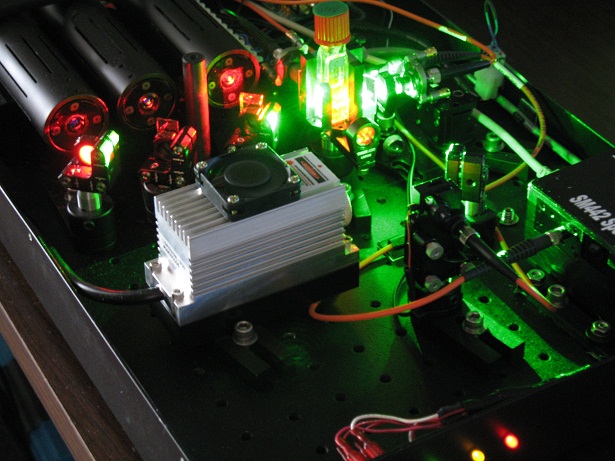
Applied NanoFluorescence is committed to providing its customers with software updates that will incorporate future research findings from the active area of SWCNT spectroscopy and photophysics. So as further progress is made in understanding the basic optical properties of SWCNTs, NanoSpectralyzer users always retain leading-edge analysis capabilities.
*Our products undergo continuous revision to improve performance and include recent scientific innovations, so instrument and software appearance and options available may change. Additionally, we are happy to work with you to customize many of our products to address specific application needs. Contact us at This email address is being protected from spambots. You need JavaScript enabled to view it..




